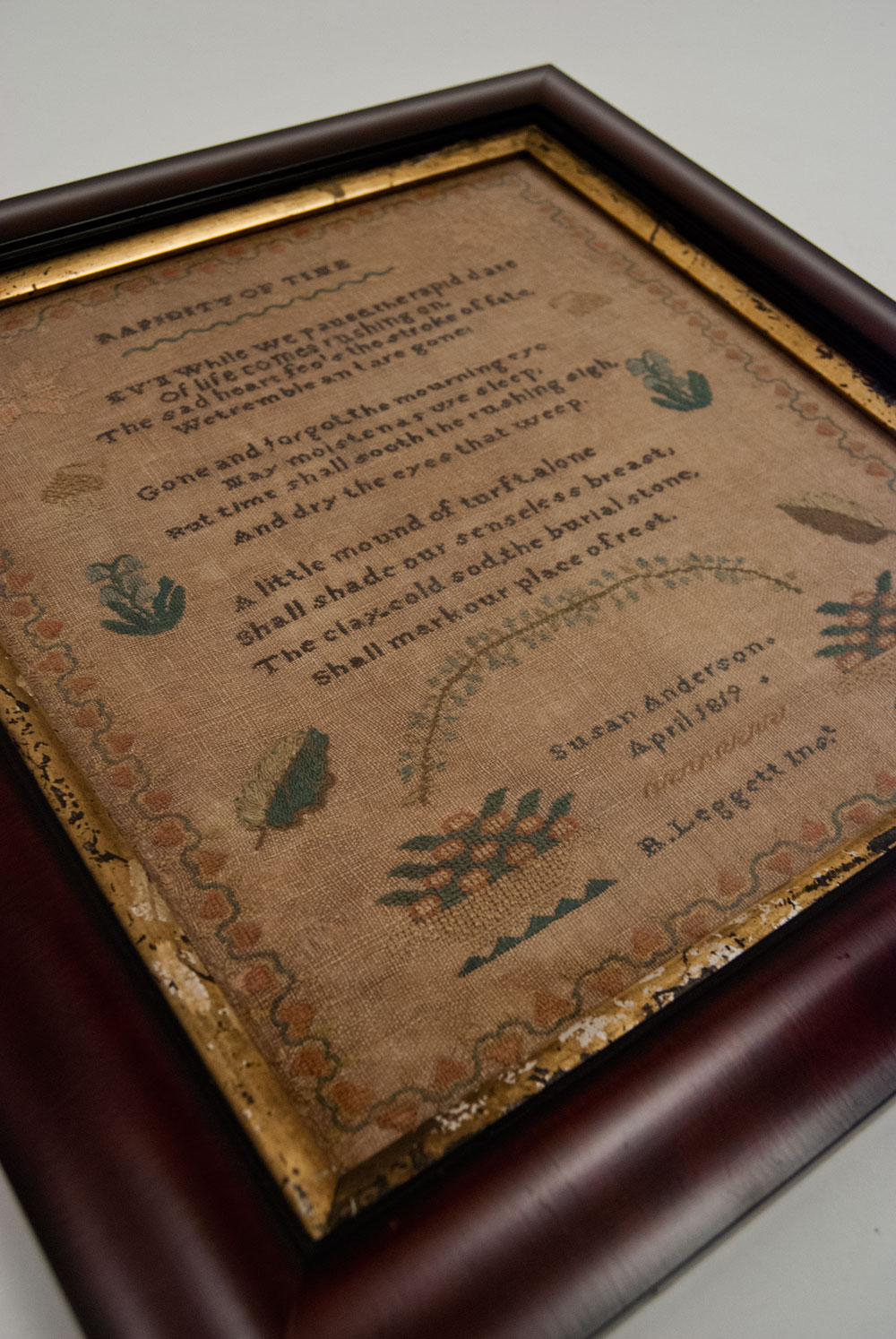
Circa 1819: Susan Anderson's rare and important antique American Quaker sampler has distinctive motifs that make it part of the important group of samplers described in Betty Ring's book (Vol ll,page 318) as The New York Female Association School group .What makes this so significant is the naming of the instructress Rebecca Leggett, the needlerwork teacher responsible for creating these highly identifiable motifs documented on the other known examples. In the book on the New York Free School Society, author William Bourne traces the Society "to a number of Quaker women....members of the Society of Friends who were engaged in charity and education for the poor" children of New York City. Betty Ring ntes that "the first school(school #1) under the direction of the Female Association opened for boys and girls...but the enrollment later was limited to girls". The second school on Henry Street where our instructress Rebecca Leggett is documented having taught (see Bourne 483), asserts Ms. Ring,"commenced classses in the Henry St. schoolhouse on Feb.18,1812". William Bourne also adds that "The (Female) Association having for some time occupied in school #2...the Henry St. building". He goes on to say on page 683 that "the building was 2 stories high with a basement; with the Female Association (School #2) occupying the first floor". In 1821, proposals for changes were made, and the "girls school was opened under the care of Rebecca Leggett at a salary of $200." Leggett must have been quite an accomplished instructress to have been made head of the girls school in 1821, her skill in teaching needlework evidenced by this 1819 sampler worked under her tutelage when she was in charge of needlework and samplers.
The border on this sampler sports a distinctive "double leaf" strawberry identical to the Eliza McManus example featured in Steve and Carol Huber's book on pg 143. The layered handled baskets are shared by most samplers from this group including Eliza McManus (Huber and Huber) and both examples from Ms. Ring's book. This 1819 sampler actually features these baskets on a sawtooth pedestal...the same found on the large 17x17 example signed Jane Vermilya 1823 illiustrated in the Hubers' book, .which also features the same Quaker -pointed stars as this sampler. Susan Anderson's charming sampler also has the same two tone shaded leaf and inverted acorn motif as Betty Ring's example by Ann Hayden done in 1815. The undulating vinel beneath the traditional Quaker titled verse ("The Rapidity of Time") is also used on the other sampler and, in particular, on the two Huber samplers where it is extended to become the cartouche.





